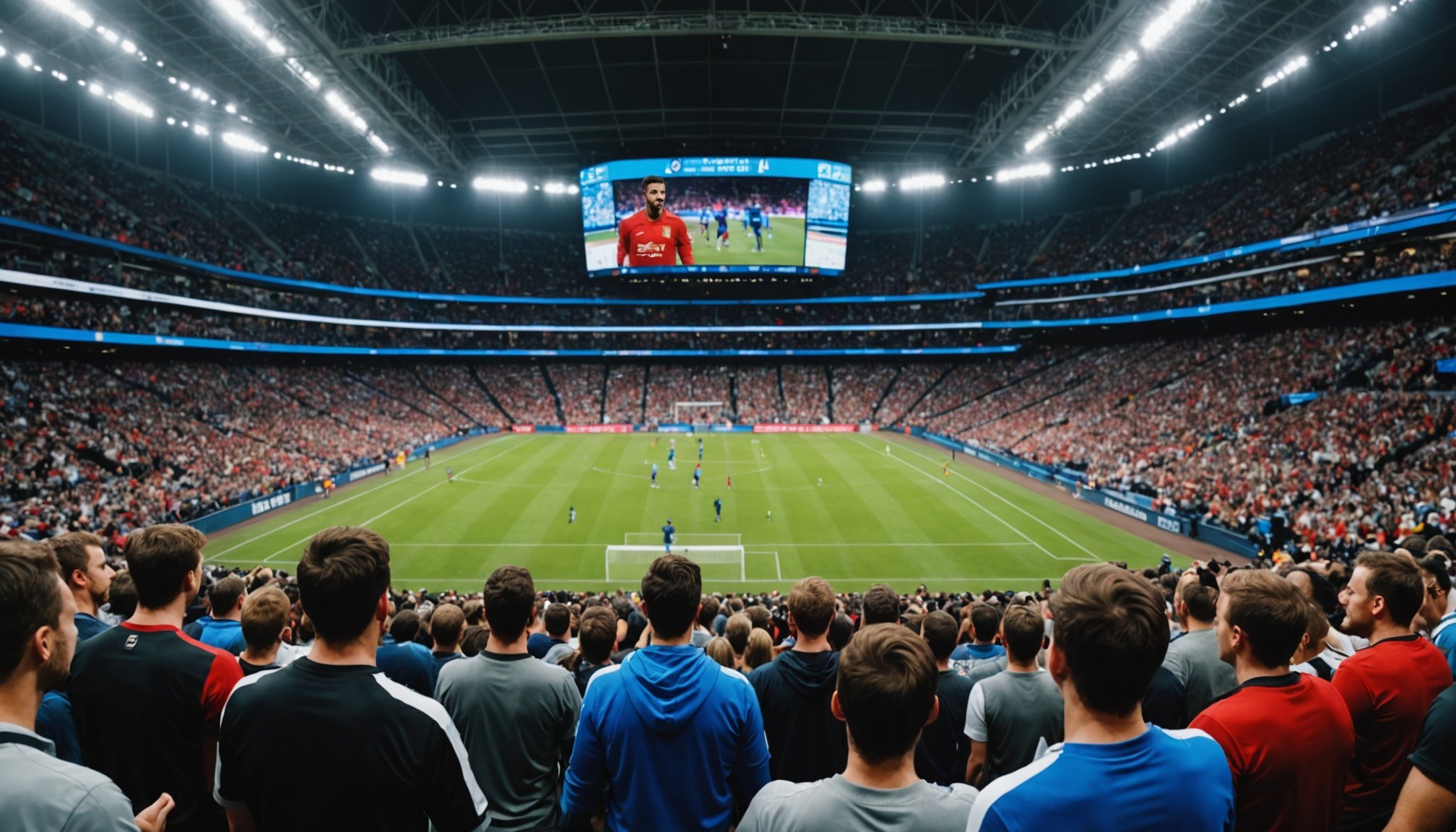Overview of AI in Sports Video Games
Sports video games have revolutionized the gaming industry, and AI technology plays a pivotal role in enhancing these digital experiences. AI technology isn’t just about making players move realistically on the field; it’s about creating an environment that mirrors the excitement and unpredictability of real-world sports. A key component lies in crowd reactions—the collective, dynamic responses from virtual audiences. These reactions can significantly heighten immersion by making the game world feel alive and responsive.
Imagine executing a game-winning goal with the virtual spectators erupting in simulated cheers and applause. These sports video games meticulously program AI to handle such spontaneous reactions, building a realistic atmosphere. AI processes crowd behavior based on numerous factors like match intensity, team rivalries, and even unexpected game twists.
Currently, trends in sports video games indicate a push towards more authentic experiences, with advances in AI technology allowing for more nuanced crowd interactions. As this technology evolves, expect an increase in the complexity of crowd reactions. Future innovations could include individualized spectator personalities, adding a layer of depth to the game’s social environment. Enhanced by AI, sports video games continue to close the gap between virtual and live sports experiences.
AI Techniques for Enhancing Crowd Behavior
Artificial Intelligence (AI) has revolutionized how we perceive crowd behavior in gaming environments and live events. By leveraging advanced AI techniques, developers and event organizers can create dynamic, realistic crowd responses that enhance the overall experience. This involves integrating a blend of machine learning algorithms, procedural generation, and real-time data integration.
Topic to read : Crafting authentic space journeys: essential strategies for developers to design captivating microgravity adventure games
Machine Learning Algorithms
Machine learning algorithms are pivotal in understanding and predicting crowd behavior by analyzing patterns within game dynamics. These algorithms gather data on player interactions and environmental factors, learning from past events to anticipate how a crowd might react. For instance, if a virtual audience has previously reacted positively to a sudden turn of events in a game, the algorithm can predict similar reactions in future scenarios.
Procedural Generation
Through procedural generation, diverse and organic crowd interactions can be crafted. This technique uses algorithms to generate content that would otherwise be manually created, adding variation in crowd reactions. By simulating spontaneous behaviors and interactions, the crowd’s response becomes more lifelike and immersive, providing a unique experience every time.
Real-time Data Integration
Real-time data integration is essential for adjusting crowd reactions dynamically during gameplay. By utilizing real-time analysis of game dynamics, AI can instantly alter crowd responses to suit unfolding events. This capability ensures that crowd behavior remains relevant and engaging, reflecting changes in the game environment as they happen.
Case Studies of Implemented AI Innovations
Exploring recent AI implementation in sports video games reveals significant advancements in crowd dynamics. In particular, several notable case studies demonstrate the remarkable transition from traditional methods to innovative AI-driven interactions. These games utilize AI to simulate more complex, lifelike crowd behaviours, enhancing player experiences.
One such example includes a renowned soccer game that surpassed its competitors by integrating AI technology to adaptively respond to gameplay events. This innovation allows for terrains where spectators react uniquely to goals, misses, and fouls, creating an immersive environment. A comparative analysis highlights how traditional crowd systems, with their limited pre-set reactions, differ from dynamic AI-driven interactions. It’s evident that AI advancements surpass older models in providing realism.
Gamers and developers alike have provided positive user feedback. Players appreciate the heightened realism and unpredictability brought by AI, making matches feel more genuine. Developers note that while it can be challenging to implement, the payoff in player engagement is worth the investment. Not only do these case studies showcase successful examples of AI in gaming, but they also underline the growing need for AI to craft more authentic digital experiences.
Impact of Realistic Crowd Reactions on Gameplay Experience
Realistic crowd reactions significantly enhance the gameplay experience by deeply engaging players on an emotional level. When crowds react realistically, they create a vibrant atmosphere that mirrors real-world settings, pulling players into the heart of the action. The ambient noise of a cheering audience elevates immersion, making players feel part of the scene rather than mere spectators. This emotional connection amplifies player engagement and encourages deeper investment in the game.
Increased Emotional Engagement
One of the most profound impacts of realistic crowd reactions is the heightened emotional involvement they foster. When crowd reactions reflect the on-screen action with authenticity, players feel more connected to the game narrative. This increased player engagement can spur players to invest more time and emotional energy into the game, enhancing overall satisfaction and enjoyment.
Influence on Game Dynamics
Realistic crowd behavior can also significantly affect game dynamics. Crowds that react to in-game events can alter player strategies and possibly shift game outcomes. For instance, a fervent crowd reaction might simulate pressure on players, prompting them to make strategic decisions that they wouldn’t consider in the absence of dynamic audience feedback.
Changes in Player Behavior
Moreover, the presence of interactive, realistic crowds can drive changes in player behavior. Players may adapt their actions based on how the crowd responds, such as altering gameplay tactics to elicit positive audience reactions or avoid negative ones. This creates a nuanced layer of strategy, enriching the gameplay experience and making it more engaging and unpredictable.
Future Developments in AI and Sports Gaming
As the realm of sports gaming continues to evolve, future trends promise exciting transformations. Innovations in AI are expected to revolutionise the way games simulate live sports experiences, especially with the integration of virtual reality (VR) and augmented reality (AR).
One significant trend is the advancement of crowd AI. This technology aims to enhance crowd dynamics within games, making virtual spectators more lifelike and reactive. Experts predict that future crowd AI will not only simulate realistic reactions but also adapt to the game’s progression, providing an ever-more immersive player experience.
Furthermore, merging VR and AR with crowd dynamics offers groundbreaking potential. Imagine a player experiencing a game from the perspective of an athlete on the field, surrounded by AI-simulated crowds. Such experiences are set to become more commonplace, providing users with an unprecedented level of interactivity.
Industry experts believe that these innovations will strengthen the bond between AI and player experience, creating a seamless blend of realism and engagement. The continuous development of these technologies hints at a future where sports gaming becomes even more thrilling and immersive, pushing the boundaries of how we perceive player interaction and crowd participation in virtual environments.











